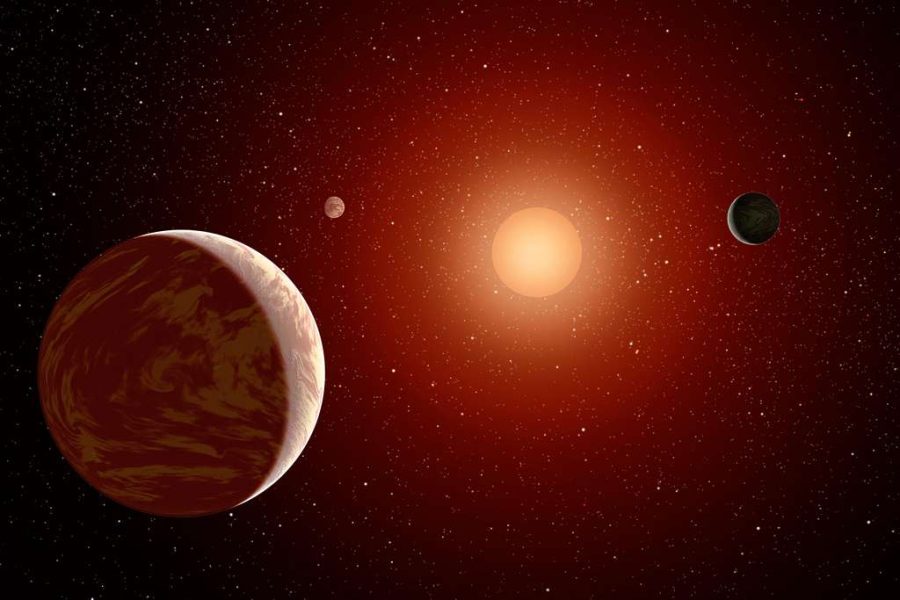James Webb Space Telescope discovers water vapor in nearby star system
May 15, 2023
Scientists detected water vapor around a rocky exoplanet, known as GJ 486 b, located 26 light-years away from Earth.
The James Webb Space Telescope was used to make this groundbreaking discovery and has ignited astronomers to find out whether this rocky exoplanet could sustain life.
GJ 486 b orbits a red dwarf star. Because red dwarfs are the smallest and coolest stars, a planet must remain in perfect distance from the astral body in order to stay warm enough to host liquid water. Once a planet meets this credential, it would be considered to be in the “habitable zone.”
Scientists noted that the distance between the extrasolar planet and the star it orbits is far too close making it considerably nonviable to support an atmosphere.
It takes GJ 486 b only 1.5 Earth days to complete an orbit around its host star because of its close proximity to the star. The surface of the exoplanet can reach up to 800 degrees Fahrenheit.
Through the use of Near InfraRed Spectrograph, a technology that is able to show the chemical composition of objects, it was revealed that hints of water vapor exist on the surface of the exoplanet. This could suggest that the planet somehow has an atmosphere despite the heat and proximity to its host star.
Water vapor has been detected on gaseous exoplanets before, yet there hasn’t been an atmosphere revealed around one.
The team of scientists behind GJ 486 b’s research looked at two transits that lasted about an hour each. They utilized three distinct methods to analyze the data in which they had gathered.
The results from all three methods are accordant in depicting a flat spectrum with a rise located at the shortest infrared wavelengths. The team also ran computer models observing various molecules which had signaled that the source was in fact water vapor.
Nonetheless, the team acknowledged that the vapor could be present on the star itself, more specifically, in cool star spots which have nothing to do with the planet at all.
“We see a signal, and it’s almost certainly due to water,” Sarah Moran of the University of Arizona and lead author of the study said. “But we can’t tell yet if that water is part of the planet’s atmosphere, meaning the planet has an atmosphere, or if we’re just seeing a water signature coming from the star,”
Future Webb proceedings and scrutiny on this finding could give scientists a glimpse into how much more there is to learn about how planetary systems operate.
A forthcoming Webb program will employ the Mid-Infrared Instrument to further examine the planet’s day side. If the planet does not have an atmosphere, or possibly a thin one, then that would indicate that the hottest part of the day side would be located directly under the star. If the hottest point is shifted, that would mean that there is an atmosphere that can circulate heat.
Fundamentally, observations through the Near-Infrared Imager and Slitless Spectrograph show that it is necessary to distinguish between planetary atmospheres and star spots.
“It’s joining multiple instruments together that will really pin down whether or not this planet has an atmosphere,” said Kevin Stevenson, principal investigator of the study.







